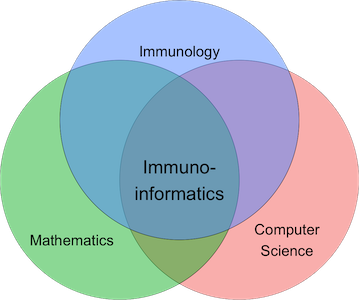22145 - Immunological Bioinformatics: Difference between revisions
Jump to navigation
Jump to search
(Created page with "right '''Course Programme''' <!-- * Fall 2023 --> '''About''' * '''Course responsible''' [https://www.dtu.dk/person/carolina-barra-quaglia?id=142840&entity=profile Carolina Barra Quaglia] — Associate professor, course responsible. [https://www.dtu.dk/person/morten-nielsen?id=5973&entity=profile Morten Nielsen] — Professor, course responsib...") |
No edit summary |
||
| Line 33: | Line 33: | ||
* Students should bring their own laptop with internet access to class | * Students should bring their own laptop with internet access to class | ||
* Students should [http://pymol.org/2/#download install PyMol] on their laptops. The PyMOL Education License file will be supplied during class. An introduction to PyMOL can be found | * Students should [http://pymol.org/2/#download install PyMol] on their laptops. The PyMOL Education License file will be supplied during class. An introduction to PyMOL can be found '''in a place that does not exist and should be updated'''. | ||
* Also, students should [https://rstudio.com/products/rstudio/download install Rstudio] on their laptops. Rstudio is free and does not require any license. An introduction can be found [https://datascienceplus.com/introduction-to-rstudio/ here] | * Also, students should [https://rstudio.com/products/rstudio/download install Rstudio] on their laptops. Rstudio is free and does not require any license. An introduction can be found [https://datascienceplus.com/introduction-to-rstudio/ here] | ||
* The course focuses on computational methods for proteins and peptides in an immunological context, so it is recommended, that students have a grasp of the biochemical profile of each of the [http://www.mathiasbader.de/studium/biology/index.php?lng=en the 20 proteinogenic amino acids] | * The course focuses on computational methods for proteins and peptides in an immunological context, so it is recommended, that students have a grasp of the biochemical profile of each of the [http://www.mathiasbader.de/studium/biology/index.php?lng=en the 20 proteinogenic amino acids] | ||
Latest revision as of 12:24, 20 March 2024

Course Programme
About
- Course responsible
Carolina Barra Quaglia — Associate professor, course responsible.
Morten Nielsen — Professor, course responsible.
- Schedule: Every year in the fall 13-weeks period, see DTU Academic Calendar
- Location: See this year's course program above
- Exam: Poster presentation + written exam
- Textbook: No textbook. The learning resources will be stated in the course program
- Course Description: For full course description, please see the DTU Course Base
General course objectives
- The course has an applied focus centered around the suite of prediction servers from the IML group
- Theory and application of computational methods in context with the prediction of immune responses, moreover:
- The involvement of TCR and BCR and MHC class I/II in inducing an immune response
- The structural and genetic characteristics of the TCR and BCR and MHC class I/II and corresponding epitopes
- Computational methods for modeling TCR and BCR and MHC class I/II and respective epitope interactions
- Application and challenges of the above in disease context, i.e. vaccinology of infectious diseases and cancer
- General engineering competencies are included in the form of theory in context with concrete application and group-based project work, where the students are responsible for planning, designing, implementing, and communicating a project.
Essential Software and Resources
- Students should bring their own laptop with internet access to class
- Students should install PyMol on their laptops. The PyMOL Education License file will be supplied during class. An introduction to PyMOL can be found in a place that does not exist and should be updated.
- Also, students should install Rstudio on their laptops. Rstudio is free and does not require any license. An introduction can be found here
- The course focuses on computational methods for proteins and peptides in an immunological context, so it is recommended, that students have a grasp of the biochemical profile of each of the the 20 proteinogenic amino acids
- A brief introduction to the Immunoinformatics and Machine Learning group can be found here here
Questions?
Please read the detailed course description, for any questions not covered by this, please contact course responsible
Previous versions of the course